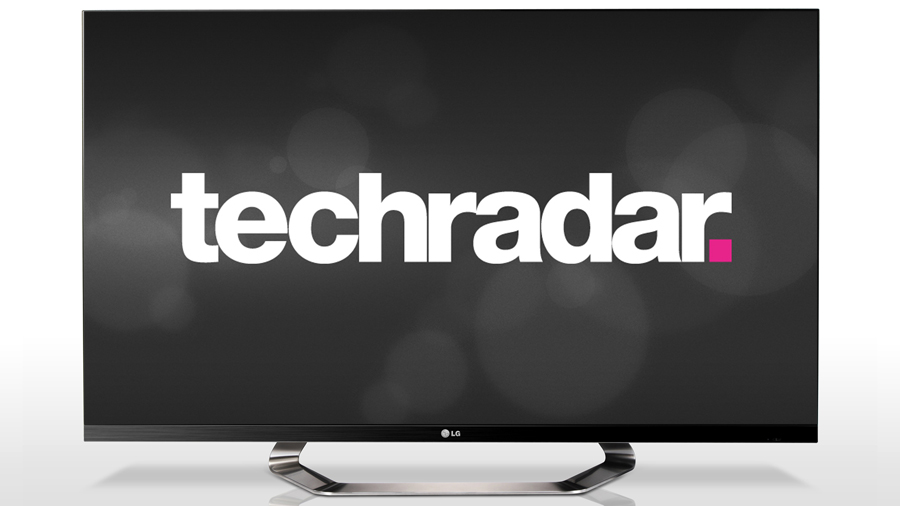Why you can trust TechRadar
The LG 47LM760T proves a fabulous all-rounder that's as adept with SD pictures as it is HD and 3D. Our first glimpse of 3D comes from a blast of 3D Grand Prix from LG's 3D World service, which features some image lag and visible horizontal lines, the latter the clear hallmark of passive 3D technology.
But while a spin of Piranha 3D displays plenty of jagged edges and some shimmer as actors walk across the camera, it also reveals a touch more detail to the action than on LG's TVs from last year.
We do miss high-definition detail during 3D movies on 3D TVs of this type, and it's worth pointing out that donning the specs does increase perceived black levels a bit while dirtying peak whites, but the depth effects are there for all to see and there's no crosstalk to speak of.

It's also a wonderfully comfortable experience, helped by the featherlight glasses. It's not perfect, but we're beginning to realise that passive 3D tech is probably the future, despite its picture foibles.
That impression is hugely helped by probably our favourite feature on the LG 47LM760T; Dual Play gaming. Using the two pairs of 3D glasses provided in the box - labelled Gamer A and Gamer B - we tried it out with old school title Burnout from an Xbox 360.

It is first necessary to set the 3D mode on the LG 47LM760T to Dual Play, which isn't difficult, though there's also a decision to be made about whether the split screen source is vertical or horizontal. In effect, you're accepting a drop in resolution and visible detail for the chance to play on an entire screen, but it's a gamble that pays off - especially on the screen of this size.
Yes, there are jagged edges, some ghosted images, and an absence of ultimate detail, but there's no worry about motion blur; the pros far outweigh the cons, at least for us.
Sign up for breaking news, reviews, opinion, top tech deals, and more.

Has LG come up with a compelling reason for the legions of people wary of buying a 3D TV to invest and upgrade? For casual, competitive gamers who still massively prefer playing against friends in the same room to lonely online gaming, Dual Play is hard to resist.
Finally on 3D-related features, we put the LG 47LM760T into 3D conversion mode while watching The Jeremy Kyle Show. It was initially impressive, with Jeremy visibly in front of the background, but during a crowd shot there only appears to be a 3D effect in the middle of the screen, and either side it's a tad confused.

Graphics also tend to suffer, too, with some lines of words brought forward, and some sent back; it's an algorithm that needs some work, or possibly abandoning.
Back in 2D, the LG 47LM760T - which uses an IPS LCD panel famed for its wide viewing angle - continues its good work with a Blu-ray disc of Grand Canyon Adventure.
Black levels aren't as deep as they could be, and we also noticed some motion blur; a flash flood through the canyon initially reveals a judder-free performance featuring exquisite detail and excellent, bold colour, although as people pass through the shot there is some visible stepping and a loss of resolution.

We tinkered with TruMotion - a system that balances both frame interpolation and the scanning backlight - on both 'Smooth' (both parameters set to 30% power) and 'Clear' (70%), and while neither introduced visible artefacts, we were treated to a slightly artificial-looking image - and weren't able to completely shift motion blur.
That said, it's a hugely enjoyable and excellent value Blu-ray performance, and happily one that extends to both Freeview HD channels and standard definition sources. On BBC One's The One Show we saw no jagged edges, but some mosquito noise around moving objects, while colour lacked gradation and finesse.
Turn to the same broadcast on BBC One HD and all those issues disappear. We'll blame the low bitrate broadcasts, since DVD and digital sources of video look absolutely brilliant; some clever and clean up scaling leaves our ageing DVD of Sophie's Choice looking surprisingly pristine and free of picture noise. We hadn't expected that.

Jamie is a freelance tech, travel and space journalist based in the UK. He’s been writing regularly for Techradar since it was launched in 2008 and also writes regularly for Forbes, The Telegraph, the South China Morning Post, Sky & Telescope and the Sky At Night magazine as well as other Future titles T3, Digital Camera World, All About Space and Space.com. He also edits two of his own websites, TravGear.com and WhenIsTheNextEclipse.com that reflect his obsession with travel gear and solar eclipse travel. He is the author of A Stargazing Program For Beginners (Springer, 2015),
